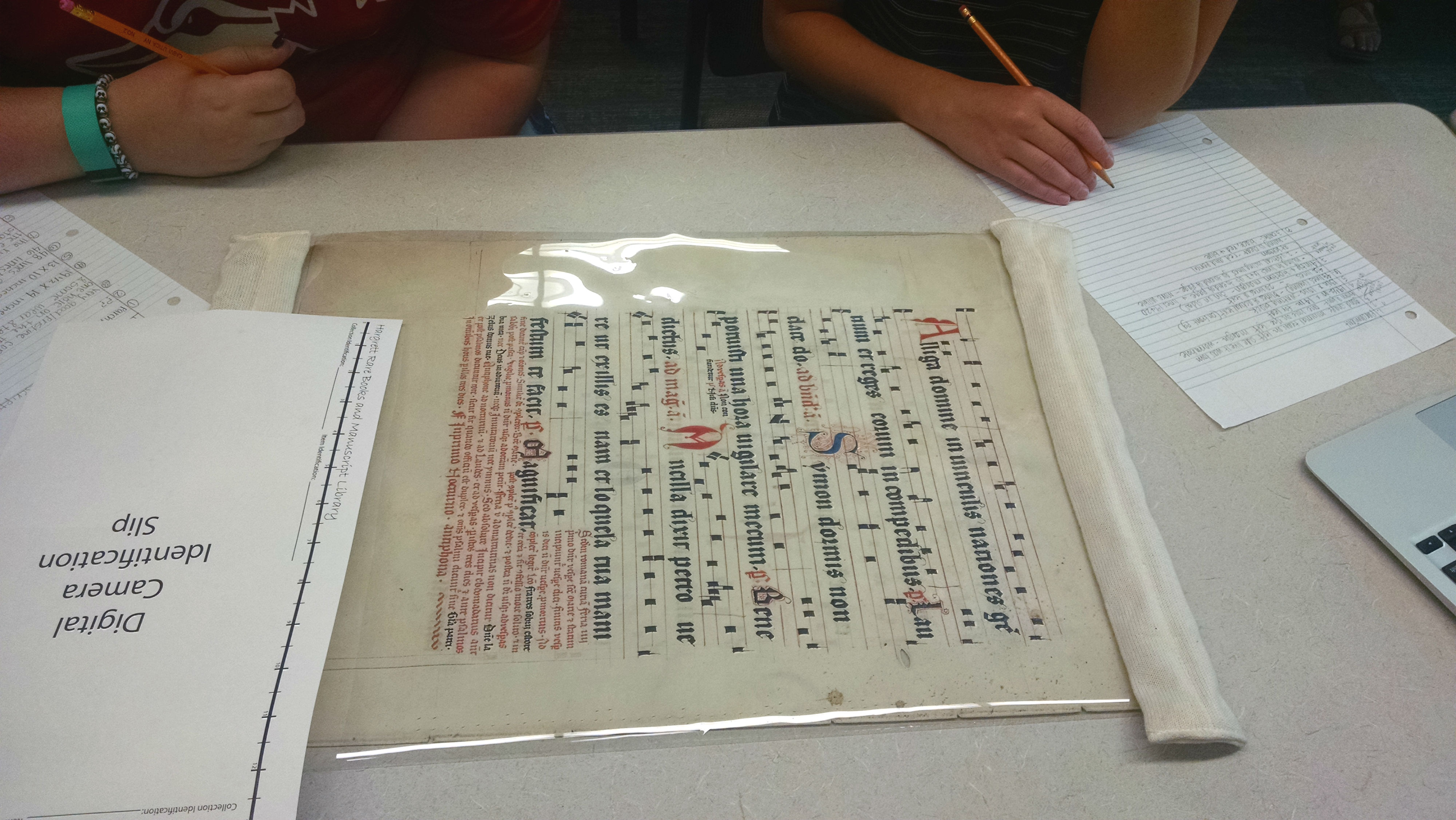 What’s on this week? It’s practicum time — the week the students actually apply the codicology, paleography, and (to a lesser degree, sadly) illumination skills they marched through in the first three weeks of Manuscript Bootcamp.
What’s on this week? It’s practicum time — the week the students actually apply the codicology, paleography, and (to a lesser degree, sadly) illumination skills they marched through in the first three weeks of Manuscript Bootcamp.
This practicum is one I’ve run as a capstone assignment in other versions of the course (including my FYOS – stay tuned for more on that). The students work in pairs, each with one of the single leaves from the Hargrett Library’s collections, and their final goal is to produce a formal fragment description. The model for that description is one developed by Micah Erwin, back when the Medieval Fragments Project at the Harry Ransom Center still existed, itself modeled on the descriptive format or “code” deployed for manuscripts by major repositories like the British Library. My version of the fragment description is an exercise in thick description — focusing on particular features of membrane condition, page layout, and textual content — that forces students to examine the minutiae of the page.
Ambitious for the fourth week of the semester? Perhaps … but not necessarily. I’ve developed a step-by-step worksheet explaining exactly what questions to ask of the fragment, what to measure and how, what information to record, what terminology to use for the scripts the students encounter, etc. (I am super happy to share the worksheet with anyone who wants to see it – please drop me an email at ctcamp at uga dot edu.) I also give them tricks for how to find their fragment’s (Latin) text on Google – and I help them with the transcription when those tall Ss or knotty abbreviations prove a challenge. It helps that everything I hand them is a standard religious/liturgical text of some sort – the Latin is easy, and easily findable online. The worksheet doesn’t quite make the fragment description plug-and-play, but it’s pretty close. The result? Physical descriptions that are much more detailed, and accurate, than the Hargrett’s scanty cataloguing can offer.
 And we don’t get concerned about the most challenging elements of manuscript description: dating and placing the fragment. In four weeks of class, the students haven’t looked at enough manuscripts to be able to assess those elements with any precision, even with a tutorial in how to use catalogues of dated and datable manuscripts. It would, however, be an excellent follow-up assignment, something for the students to return to at the end of the semester to complete their fragment descriptions (and with intervening practice in dating/placing manuscripts by hand and decorative elements. Hmmm…)
And we don’t get concerned about the most challenging elements of manuscript description: dating and placing the fragment. In four weeks of class, the students haven’t looked at enough manuscripts to be able to assess those elements with any precision, even with a tutorial in how to use catalogues of dated and datable manuscripts. It would, however, be an excellent follow-up assignment, something for the students to return to at the end of the semester to complete their fragment descriptions (and with intervening practice in dating/placing manuscripts by hand and decorative elements. Hmmm…)
The most valuable result of the practicum? Getting the students to work independently with real-live manuscripts – not digital facsimiles, not printed pages in a textbook, but with the thing itself. There are no cribs or answer keys, the minims do not resolve themselves, the physical description often requires judgement calls. The stakes are higher and the possibility of failure greater – but the payoff is so much richer, because the students have started from scratch and “solved” the puzzle that the fragment poses.
Besides, when you go home for Thanksgiving and Great-Aunt Pat asks what you learned up in Athens, it makes for a great story.